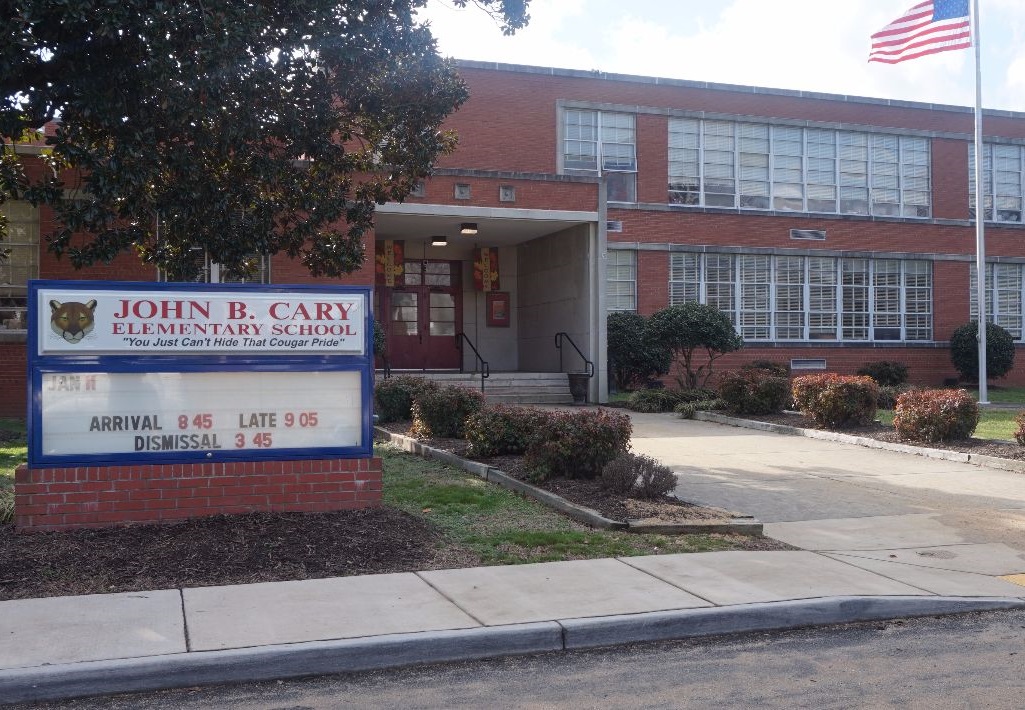A recent “pairing” proposal to help integrate two Richmond city schools has run into a backlash that, in some eyes, harks back to the bad old days of Massive Resistance.
The Richmond Public School System’s solution to improve diversity has frustrated some residents to the point that they are threatening to leave the district. And some see the situation as a direct call back to the city’s mid-20th century struggles to integrate, which eventually led to the Supreme Court.
It all began when RPS employed the services of Cropper GIS, a company that works on demographic and facility planning for K-12 school systems, in order to alleviate overcrowding due to projections of a 6.6 percent increase in overall RPS enrollment within the next 10 years. The Richmond City School Board also hoped to place more students into new school buildings, and to increase student body diversity.
Cropper GIS proposed two possible solutions to take effect during the 2020-2021 school year, which would impact around 10 percent of students currently enrolled in RPS schools. One would move around 1200 students to different schools, mostly in the East End, with the goal of putting more students into George Mason Elementary, which will open in fall 2020.
The other option would impact less than half the number of students, and would involve the pairing of four elementary schools. Fairfield Court Elementary and Woodville Elementary would be paired, as would William Fox Elementary and John B. Cary Elementary.
“Pairing” is a process that involves combining student bodies, then putting fewer grades into each school within the pair. In the case of Fox and Cary, their respective school districts would be combined, with all students from the combined district attending Fox for kindergarten through second grade, and Cary for third through fifth grade.
When the pairing of Fox and Cary was announced, several parents within the Fox district spoke up in opposition to it, and that opposition has created tension throughout the Richmond public school community.
Both Cropper GIS and RPS were open about the fact that the pairing plan was introduced in order to improve the diversity of both schools. At the moment, students enrolled at Fox are 60 percent white, while Cary’s enrollment is 83 percent black. If the proposal goes into effect, these divergent numbers would stabilize, with Cary having a population of 52 percent black and 42 percent white, and Fox having a population of 44 percent black and 47 percent white.

Richmond Schools Superintendent Jason Kamras expressed support for the proposals to diversify the school systems. “Anywhere we have an opportunity to create a more diverse, more integrated school environments is a great thing, and I want to work with [parents] to figure that out,” Kamras said in an interview with the Richmond Times-Dispatch.
However, several parents with children currently enrolled at William Fox Elementary have expressed their apprehension at the pairing on the Richmond Public Schools feedback form; responses to this form were obtained by the Richmond Times-Dispatch through a FOIA request.
“My youngest daughter would enter Kindergarten the same year that her older sister would be bussed over to Cary Elementary,” said one parent. “Our girls would never go to elementary school together and I would have two children at two different elementary schools.”
Other parents voice their concern regarding the developmental impact that switching schools halfway through elementary school would have on their children.
“Developmentally, this is a delicate time for children and they need the stability of their friends and resources they have come to be comfortable with,” said a parent from William Fox Elementary. Of course, friends who are in the same grade would be changing schools at the same time.
Several parents from Fox also claimed that they moved to the district specifically so their children could attend William Fox Elementary. They claimed that if the pairing of Fox and Cary went into effect they would either move out of the city, or enroll their children in private schools.
“If option 2 is passed I know that I, along with many other neighbors, would carefully weigh the decision of whether to send my children to private school or to move out of the district for a better elementary school option for our family,” said a Fox parent.

This is not the first time Fox and Cary have been at the center of an integration debacle. In 2013, the school district voted to move students from Clark Springs Elementary, a majority-black school, into the Cary district. Then, students from the majority white section of the Cary district were transferred to Fox. This reshuffling in 2013 increased the racial polarity of the schools.
That decision actually resulted in a lawsuit by Kimberly Johnson, who was then the parent of an RPS student. The lawsuit alleged that the 2013 redistricting was discriminatory, but it was ultimately dismissed due to the fact that Johnson had moved to Henrico County and no longer had a child attending RPS schools.
Witnessing the response to the pairing proposal, Kamras commented on Twitter about the ways those responses mirrored things white parents had said about public schools during Virginia’s attempts to integrate 50 years earlier.
“Re Fox-Cary pairing: The loudest feedback sounds eerily like Massive Resistance 2.0,” Kamras tweeted on July 17. “BUT I’ve also received a lot of feedback from families of all backgrounds who welcome the idea. In fact, I believe they’re the majority. I encourage them to share their perspective publicly.”
Kamras’s reference to Massive Resistance referred to an organized campaign in response to the Supreme Court’s 1954 Brown v. Board Of Education decision, which desegregated public schools throughout the country. Begun by Senator Harry Byrd of Virginia, the Massive Resistance campaign lasted nearly two decades, and saw some public school districts close for as many as five years in an effort to block white and black students from attending the same schools.
The threats of parents to move out of the city is reminiscent of the late 60s and early 70s, when Massive Resistance had been ended by a 1968 Supreme Court decision and Richmond Public Schools began a court-ordered citywide busing program in order to integrate student populations within different schools.
This decision brought about strong opposition from white families. Ultimately, in the 1973 Bradley v. Board Of Education decision, the Supreme Court ruled that inter-district busing had to be limited to one school district, meaning that students who lived in surrounding counties could not be bused into Richmond, or vice versa. This decision spurred an increase in “white flight” to the surrounding counties and to more expensive private schools, leading to de facto segregation in which black students in the Richmond metropolitan area made up the vast majority of students at city schools, while white students were the majority in private schools and the surrounding counties.
However, almost 50 years later, these trends have swung the other way — between 2005 and 2013, Richmond’s white population increased by 30 percent, according to StatChat. At this point, Richmond’s white population is growing at a faster rate than the city’s black population — and gentrification is at the root of this growth.

Kamras’s tweet struck a chord with many Richmond residence witnessing the tensions over the school systems proposal.
“We love Fox, but more importantly we love RPS,” one resident tweeted in response to Kamras’s tweet. “Any change will involve growing pains, but also a great opportunity for growth. We support rezoning that makes ALL RPS schools more equitable.”
Some residents with students attending Fox recognized the weight of what the school board is trying to achieve, and voiced their support.
“Currently zoned in Fox with a toddler. We support all efforts that dismantle segregation, exclusion of Black families, and entrenched privilege for white families,” a supporter of the pairing proposal tweeted.
The proposal has also sparked the interest of residents outside of Fox and Cary, who are calling for similar changes in their neighborhood.
“I’m a Northside parent affected by rezoning,” tweeted a parent. “My neighbors would love to see a plan similar to Fox/Cary pairing in our district that could unite our 3 elem. schools & promote path to middle & HS. We’re concerned current plans don’t go far enough to create integration & equity.”
In an effort to increase dialogue around the controversial pairing proposal, RPS held a public meeting at Fox Elementary last Thursday. Around 75 people came to offer feedback on the subject. According to the Richmond Times-Dispatch, one Fox Elementary parent expressed concerns about RPS’s ability to create diversity within the city’s student bodies.
“Most people in this community are committed to the ideal of diversity,” said the parent. “I think there’s concern about how capable the School Board is and [Richmond Public Schools] is in actually implementing that in a thoughtful way.”
Richmond School Board member Scott Barlow told the Richmond Times-Dispatch that the board could vote on the plan as early as November, though that would ultimately depend on feedback they receive from the public. Another public meeting on the subject will take place at Fox Elementary on Tuesday, August 13 at 530 PM.
Additional reporting by Marilyn Drew Necci. Top Photo via rvaschools.net.



